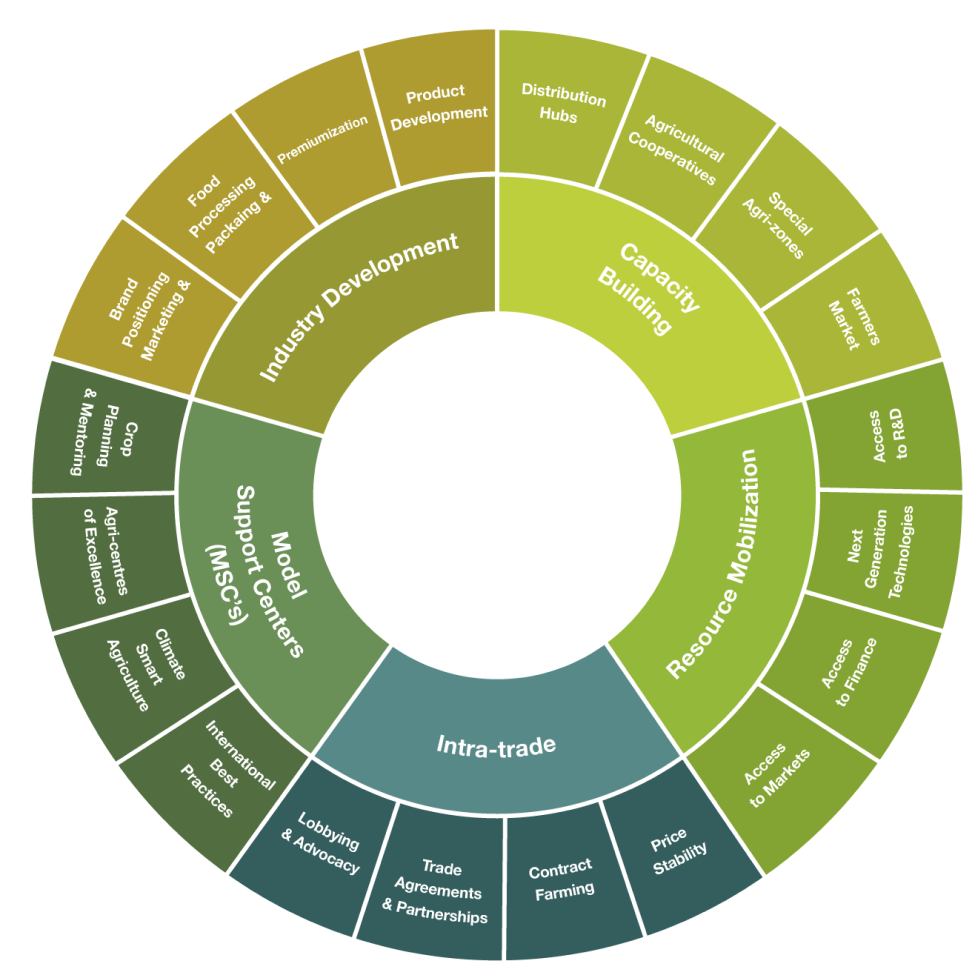Agri-Technology
Modern technology integration, from drones to precision farming, enhances efficiency, scalability, and innovation, making farming more productive and sustainable.
Promoting Tech Access
Investments in Model Support Centers that offer modern equipment rental services, collaborations with technology companies, research initiatives, subsidies, and educational programs are essential for promoting the adoption of state-of-the-art tools and techniques in agriculture.
Challenges of Adaptation
Technology Integration
The integration of modern technology, from drones to precision farming, has the potential to enhance efficiency, scalability, and innovation in agriculture, making farming more productive and sustainable.
Despite the potential benefits, 75% of OIC farmers still rely on hand tools, limiting the sector's efficiency and innovation. This dependence on traditional methods inhibits progress and hinders the adoption of modern agricultural technology.
The integration of modern technology has the potential to revolutionize the entire agricultural process. For instance, the use of drones for tasks like fertilizer application can drastically reduce time and labor costs, possibly by as much as 75%. Furthermore, drones equipped with advanced sensors can identify variations in crop needs, enabling precise and targeted applications of fertilizers and other resources. To ensure that technology becomes accessible to smaller farmers, investments in Model Support Centers offering equipment rental services are crucial. Collaborations with technology companies for research, subsidies to encourage technological adoption, and educational initiatives aimed at training farmers on modern tools and techniques can further drive the adoption of state-of-the-art technology within the agricultural sector.
This transition from traditional practices to cutting-edge methodologies involving drones, precision farming, smart irrigation, and data-driven insights promises not only enhanced productivity and reduced risks but also healthier crops and a broader transformation of traditional agricultural practices. Technology, serving as a catalyst for this change, stands at the core of the Resource Mobilization strategy, emphasizing the importance of embracing innovation and integration to drive agricultural progress and sustainability.
A Look Into Agri-Technology
A New Era: Agri-Public Private Partnerships (Ag-PPP)
A new paradigm is to use Agricultural Public Private Partnership (Ag-PPP) to achieve wider and sustainable impacts, The main goal of PPPs is to leverage the strengths and resources of each partner to achieve sustainable and inclusive Agri growth.
PPPs can help to mitigate risk in agriculture by leveraging the strengths and resources of different partners and stakeholders.
To ensure the successful implementation of the strategies, a balanced funding framework is recommended. The framework suggests a distribution of funding from various sources to support development and sustainability. The balanced funding approach diversifies financial resources, mitigates risks, and promotes shared ownership and accountability among stakeholders.
The private-public partnership approach fosters collaboration among stakeholders, including government entities, local investors, foreign investors, financial institutions, and the IOFS. This collaborative structure creates a platform for shared decision-making, knowledge exchange, resource pooling, and risk sharing.


Our Value Programs
Get in touch
Almukarramah team can’t wait to answer any questions you might have for Trade57!



